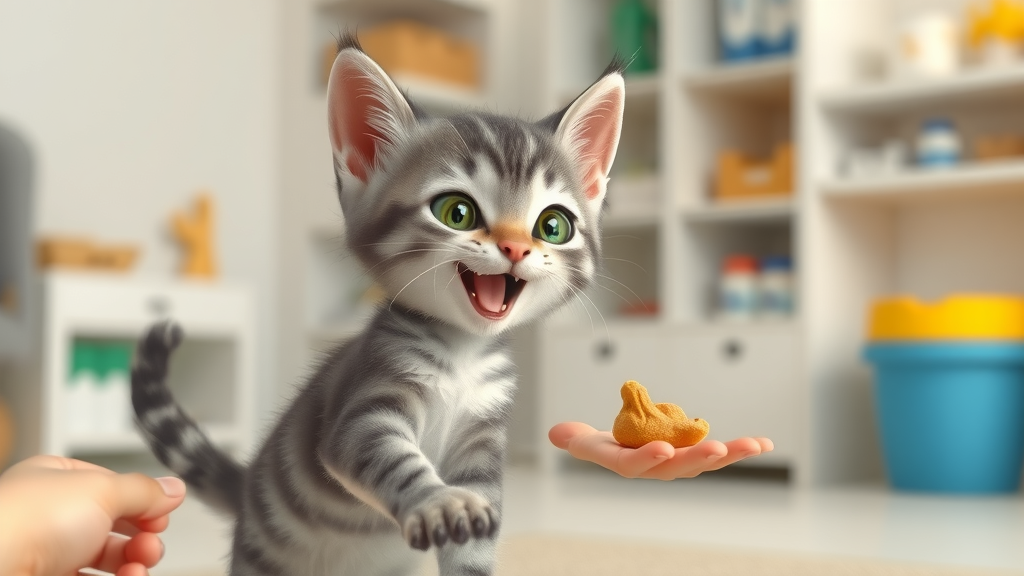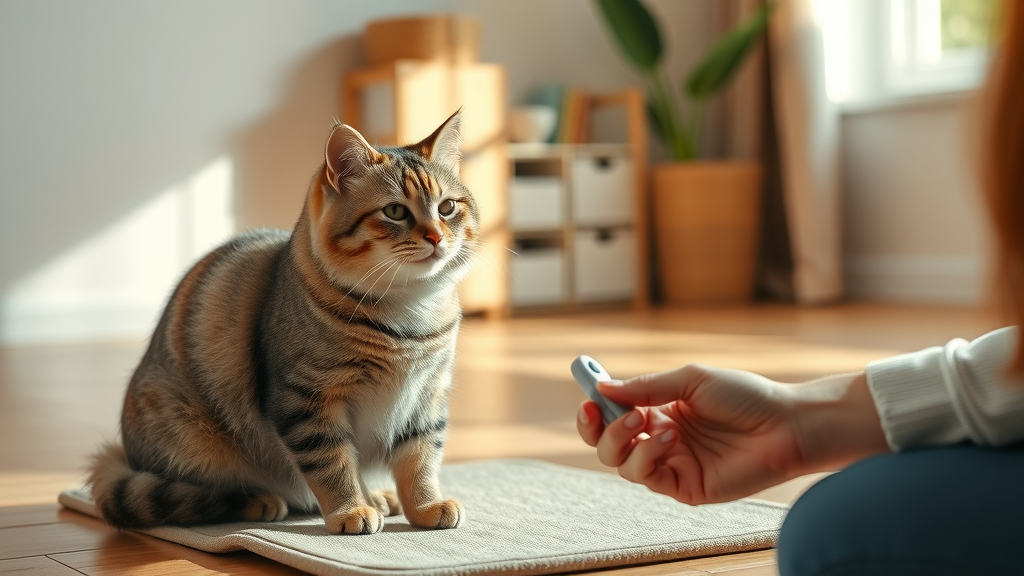Ever wondered if your independent cat can learn to come when you call? It may sound impossible, but with the right training cats respond just as enthusiastically as dogs. If you’ve struggled to get your feline’s attention, you’re not alone—and you’re about to discover how easy cat training can be when you use proven, positive methods. Whether you have a curious kitten or a set-in-their-ways adult, teaching your cat to come when called is within your reach. Read on for step-by-step strategies, expert tips, and the answers to every owner’s most-asked questions.

Ever Wondered, 'How Do I Teach My Cat to Come When Called?' Let’s Break Down Cat Training Myths and Realities
The idea that cats can’t be trained is a widespread myth . Many believe that felines are too independent, but the truth is that training cats is both possible and rewarding. When pet owners approach cat training with patience and an understanding of how cats learn , the results can surprise everyone involved.
Training your cat starts with busting the myth that only dogs respond to commands. Science shows cats can be trained —they just need different motivation and a unique approach. As you dive into these methods, you’ll empower yourself to improve your cat's safety, strengthen your bond, and enjoy the thrill of a good kitty coming when called, every time. From the essential verbal cue to choosing the perfect food reward and understanding the value of short training sessions, you’ll gain a full toolkit for success.
Discover Why It's Possible—Debunking the Myth: Can You Train Your Cat to Listen?
Contrary to popular belief, cats learn through consistent, positive training—just like dogs. The secret isn’t in overwhelming discipline or pushing your cat, but in giving your cat good things every time they respond correctly. With short, fun training sessions and desirable treats, even an aloof cat eventually discovers responding to a call means something pleasant is coming their way.
In practice, this means that training your cat is about understanding their motivation. For some, it might be a favorite piece of cat food, while for others, a certain toy or gentle praise works best. A consistent, upbeat approach lays the groundwork for a lasting habit—and soon, your feline friend will associate your call with positive, rewarding interactions.

What You'll Gain from Mastering How Do I Teach My Cat to Come When Called?
- Concrete steps to train your cat or kitten effectively
- Practical strategies for positive cat training
- Insight into how cats learn and respond to cues
- The role of treats, praise, and patience during training
- Answers to the web’s most-asked questions about training cats
How Do I Teach My Cat to Come When Called? Step-by-Step Process For Every Owner
Answering the question “ how do I teach my cat to come when called? ” starts with the right preparation and a positive mindset. You’ll need a few simple tools—think of them as your treat bag essentials—and a healthy dose of encouragement. No matter your cat’s age, these actionable steps help you set up successful training sessions and bring results in a matter of weeks.
Start by identifying what your cat likes best, from irresistible bits of cat food to a favorite toy or gentle scratch behind the ears. Use this knowledge during your training sessions, pairing a unique verbal cue —such as their name or a special word—with rewards. As your cat connects the cue with positive experiences, coming when called becomes a natural response rather than a chore. Remember, train your cat with patience and optimism, and the process will be as enriching as the result.
Prep Essentials: Tools and Positive Reinforcement for Training Your Cat
- High-value treats your cat loves
- A safe, distraction-free space
- Consistent, clear verbal cues
- Clicker (optional)
- Calm and upbeat demeanor
The most important thing about preparing for training cats is to set up a calm, familiar environment. Use a treat bag filled with your cat’s favorite food reward, a clicker for those interested in clicker training, and always keep the training session area free of distractions. If you’re using a verbal cue, make it short, consistent, and delivered with enthusiasm. Remember to remain patient—even if your cat seems disinterested sometimes. Consistency and positive reinforcement will help your cat learn much faster than any negative method.

Step-by-Step: How Training Cats to Respond to Their Name Works
- Choose a unique word or your cat’s name as the cue
- Stand a few feet away and enthusiastically call your cat
- When your cat glances or moves towards you, immediately reward with a treat
- Gradually increase the distance
- Repeat daily in short, consistent sessions
By creating a desired behavior through this step-by-step process, your cat will learn to associate your call with the anticipation of good things. Begin with just a few feet between you and your cat; as your feline responds more reliably, slowly extend the distance. Always end each training session on a high note—this leaves your cat wanting to come back for more.
"Patience and positive reinforcement are key when you train your cat—teaching trust fosters lasting results."
Over time, the simple repetition of this process—combined with the use of high-reward cat food—builds a strong connection between the verbal cue and the happy outcome. This is a classic principle in cat training and clicker training : when your cat knows responding gets them a treat or praise, they’re motivated to come every time.
Train Your Cat Faster: Essential Tips for Success
Successful cat training isn’t just about technique—it’s also about timing, repetition, and understanding what your pet values. To train a cat quickly, keep sessions upbeat and brief, and tailor each approach based on what motivates your individual cat. The combination of food rewards, gentle praise, and patience is the formula for teaching your cat fast.
Remember, if you try to push your cat during a training session when they’re not receptive (hungry, sleepy, or stressed), you may slow progress. Focus instead on those moments when your cat is alert and in a playful or curious mood—this is when cats learn best.
How Cats Learn Best: Timing, Repetition, and Good Things

- Combine treats with gentle praise for good things
- Keep sessions brief—5 minutes at a time
- Always reward immediately after the correct response
- End on a positive note to leave your cat eager for next time
Cats learn most effectively when the food reward or praise is given immediately after the desired behavior. Use your treat bag for consistency, and end your training sessions while your cat is still engaged—this keeps them responding enthusiastically the next time you call. Remember to build up your training sessions slowly; patience ensures lasting change.
If your cat actively responds to the verbal cue or even comes running, don’t be shy with the treats or an enthusiastic “ good kitty !” This reinforcement cements the behavior. Keep in mind that cats, just like dogs, thrive on short, repeated moments of success. Making good things happen right away is the cornerstone of effective training your cat .
Common Mistakes When Training Cats and How to Avoid Them
- Skipping rewards
- Using cues inconsistently
- Training when your cat is stressed or distracted
- Punishing or scolding—instead, focus on good things
One of the biggest pitfalls when you train a cat is to skip food rewards or give a treat too late. Cats learn by immediate association: if your timing is off, your cat won’t connect the behavior with the reward. Always deliver rewards instantly, and ensure your verbal cue is consistent each time.
Avoid training when your cat is hiding, upset, or distracted by new environments, visitors, or the promise of cat food elsewhere. And most importantly, never punish or scold during or after a session—punishment damages trust and discourages your pet from trying again. Stick to encouraging good things for the best, fastest results in training your cat .
Practical Examples: Training Cats in Real-Life Scenarios
To make training your cat practical, go beyond simple sessions and bring the lessons into everyday life. Imagine calling your cat at mealtime and seeing them run to you—or calming your cat at the vet by using your established cue. These small victories use real situations for learning, which helps cats learn that coming when called is always a good thing.
Whether you’re introducing training in a bustling home or need specific solutions for multi-cat households, tailoring your methods creates lasting habits. The following table shows specific scenarios and top training tips for each to help you seamlessly integrate cat training into your routine.
| Scenario | Training Tip |
|---|---|
| Calling at mealtimes | Associate cue with mealtime treat |
| New environments | Start training in a quiet, familiar room |
| Multiple cats | Train separately using unique cues and rewards |
Through repetition, consistency, and the clever integration of treat bags or food rewards, your cat will learn quickly—even in unpredictable settings. For trips to the vet or time in a cat carrier, you can also put the cat at ease by using cues and rewards, turning stressful moments into opportunities for positive reinforcement.
People Also Ask About How Do I Teach My Cat to Come When Called?

How do I train my cat to come when called?
To train your cat to come when called, start with a consistent verbal cue and pair it with a high-value treat that your cat likes. Begin by calling your cat from a short distance. The moment your cat acknowledges or moves toward you, reward immediately. Use short, daily training sessions and never force the interaction—repeat until the response becomes predictable.
How do I make my cat come when I call?
Making your cat come when you call involves creating positive associations. Call your cat using their name or a unique word, and every time they respond—even if it’s just a glance at first—offer a reward. Over time, increase the distance and use the cue in varied locations to strengthen the behavior. Keep sessions positive, and end with praise or play to reinforce coming when called is a good thing .
What is the 3-3-3 rule for cats?
The 3-3-3 rule refers to the adjustment period for a newly adopted cat: three days to decompress, three weeks to start feeling at home, and three months to become fully comfortable in their new environment. Understanding this rule can help you plan your training sessions and avoid overwhelming your cat, making learning new behaviors—like coming when called—much smoother.
Why won't my cat come when I call him?

If your cat won’t come when called, the cause is usually a lack of compelling motivation or distractions in the environment. Check your rewards—use what your cat loves most, whether it’s special cat food or a beloved toy. Ensure your verbal cue is clear, and avoid calling your cat for negative reasons (like trips to the vet or using the cat carrier). Build positive associations, and with patience, most cats will start responding reliably.
Frequently Asked Questions: Mastering How Do I Teach My Cat to Come When Called?
-
Can you truly train your cat like a dog?
Yes, while the methods and motivations differ, training cats with short, fun, and treat-based sessions can produce remarkably reliable behaviors. Cats respond well to positive reinforcement but may not learn in the same way as dogs. -
How long does it take to train a cat to come when called?
Most cats learn within a few weeks if sessions are consistent and rewarding. Some may take longer; every cat learns at their own pace—patience is essential for success in training your cat . -
Are there certain cat breeds that learn faster?
While all cats can be trained, breeds like Bengals, Siamese, and Abyssinians are often described as more eager to learn and respond quickly to training, especially when high-value rewards are involved. -
What types of treats work best for training cats?
The best treats are those your cat finds irresistible—soft cat food, freeze-dried meats, or commercial training treats. If your cat is especially picky, experiment until you find a reward that triggers excitement every time.

Fast Facts: Cats Learn Quickly with the Right Training Techniques
- Most cats can learn to come when called within a few weeks
- Use high-value rewards and short, daily sessions
- Never use punishment, as it damages trust
- Training your cat can improve your bond and safety
Stay Ahead: Subscribe for More Tips on How Do I Teach My Cat to Come When Called?
Stay informed. Stay inspired. Subscribe to our monthly pet newsletter for the best in cat and dog care. 🐾 Join now — your inbox will thank you.

Conclusion
Take action—gather treats, set aside time daily, and start teaching your cat to respond with joy. The key is patience, consistency, and celebrating every small victory with your feline friend.
Training your cat to come when called is a rewarding endeavor that strengthens your bond and enhances their safety. For a comprehensive guide, consider the article “ Teach your cat to come when called ,” which offers step-by-step instructions and expert advice on effective training techniques. Additionally, “ How to Teach a Cat Their Name ” provides valuable insights into name recognition, a fundamental aspect of recall training. If you’re serious about teaching your cat to respond reliably, these resources will equip you with the knowledge and strategies needed for success.
 Add Row
Add Row  Add
Add 




Write A Comment